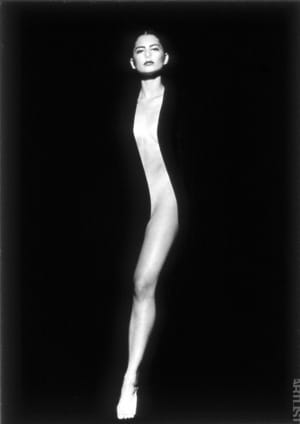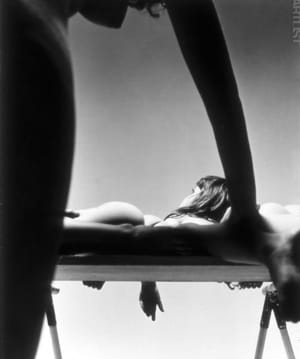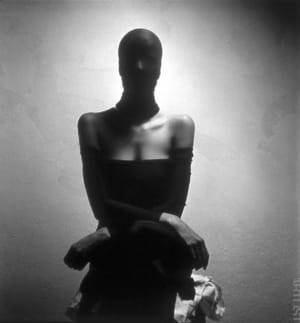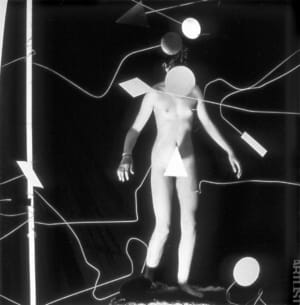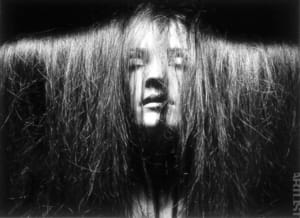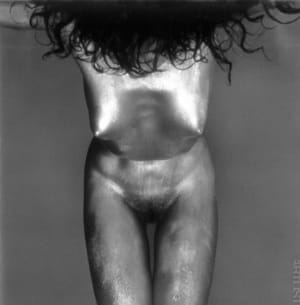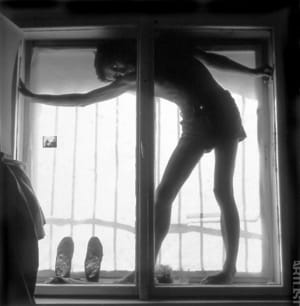- First Name
- Tono
- Surname
- Stano
- Born
- 1960
- Birth place
- Zlaté Moravce, Slovakia
- Place of work
- Prague
- Keywords
- CSU Library
- ↳ Find in the catalogue
About artist
In the Czechoslovak environment of the 1980s the works of Tono Stano looked like apparitions. After he graduated from the Secondary School of Applied Arts in Bratislava where due to limited capacity he was accepted into the Studio of Photography headed by Milota Havránková instead of the Studio of Graphics, he worked as a film photographer for one year. Later during 1980–1986 he and his classmates at FAMU – Miro Švolík, Vasil Stanko, Rudo Prekop, Kamil Varga and Peter Župník (photographers referred to as the Slovak New Wave) broke all the existing assumptions about what is photography.
It is precisely the creative student years and Stano’s work until the first half of the 1990s that, in retrospect, appear to be the most interesting also for the reason that he was one of those who helped to open up until then inaccessible topics for photography. Whether it is the new erotic wave that was strongly tabooed during the Communist regime, staged photographs elevated to the level of free art, or the irony and exaggeration, which until then primarily documentary photography was avoiding.
However, the work of Tono Stano cannot be perceived individually and separated from the stream of the above-mentioned names, because it is without any doubt that the individual artists strongly influenced one another. An example of a collective engagement is the exhibition Hra na čtvrtého (Playing the Forth), which took place in Fotochema in Prague in 1986 with Rudo Prekop and Michal Pacina. Every one of them photographed a series of one part of the human body, and the photographs were exhibited above each other and in lines. In her introductory speech, Anna Fárová said the following about this project: “The principle of this exhibition is completely new for photography. The forth is the viewer. He is supposed to complete what the artists offered to him. (…) In today’s time of postmodernism, which eclectically borrows from all styles, includes metaphor and is entertained by a gag, which philosophically revels in historical memory and additive principles, this game of three artists on the forth has perfect timing.”
A similar overlap to “postmodernism” is visible also from the parallel with the photographic group Brotherhood. At the end of the 1980s it introduced in its collective exhibitions photographs drawing formally from older artistic streams and at the same time it borrowed figures ideologically emphasized by the former regime and visually conforming for socialistic realism. Tono Stano opened this visual game in his work Calendars 1985–1986, when he used and partially ironized allegories of industry or agriculture. Typical characteristic for his nude photographs and portraits not only from the 1990s is their dynamics. Despite the fact that Stano’s old-master approach resembles photographers such as Ivan Pinkava, the model on his technically perfect photographs creates the impression that it will jump out of its pose any moment. Many of his pictures are directly staged snapshots of a body frozen in motion.
Although, Tono Stano is one of the most respected photographers, his later works have shifted towards glamour and fashion photography, which distanced him from contemporary conceptually perceived art work, treating photography in a different way. In a similar way Stano fell silent in exhibiting. A new comeback was his exhibition in the Leica Gallery where he introduced his coloured photographs out of which several originated together with his continuous – often almost graphical – work, but most of them are from the 2010s.
- Author of the annotation
- Tereza Hrušková
- Published
- 2016
CV
1980-1986
School of Film, Photography and Television (FAMU) in Prague
1975-1979
Secondary school of applied arts in Bratislava
Exhibitions
- Solo exhibitions
-
(selected)
2004
Institut Fran¢ais, Budapest
Galerie Baudelaire, Antwerp
2002
Fascination, Galerie G4, Cheb
Galerie Waldburger & Slovak Institute & Czech Centre, Berlin
Fascination, Dům umění, Brno
Czech Centre Bratislava
Fascination, Galerie Fiducia, Ostrava
2001
Fascination, Prazsky Dum Fotografie, Prague
Photo l.a., booth of Galerie Waldburger/photofront, Los Angeles
2000
Schoren, St. Gallen, Switzerland
1996
Galerie Marzee, Nijmegen
Dom kultury, Bratislava
1995
National Technical Museum, Prague
1993
Ambrosiana, Brno
1992
Galerie U Řečických, Prague
1990
Le pont neuf Gallery, Paris
Centre Culturel des Prémontrés, Pont-à-Mouson
Galerie G4, Cheb
Mala gallery, Warsaw
Fondation Nationale de la Photographie, Lyon
1989
Musée Lapidaire, Lectoure
Galerie G4, Cheb
1988
Galerija Ars, Ljubljana
1987
Galerie Fabrik, Hamburg
1986
Fotochema, Prague
1985
Walbrzyska Galeria Fotografií, Walbrzych
1984
FAMU, Lázaňský palác, Prague
Galeria fotografií Okno, Legnica
- Group exhibitions not included in ARTLIST.
-
2005
The Nude in Czech Photography, Kostis Palamas Hall, Athens
2004
Umělecká beseda Slovenská, Bratislava
2002
Dom umenia, Bratislava
Fotobiennale, Moscow
Czech Centre, Paris
2000
The Nude in Czech Photography, Císařská konírna Pražskékeho hradu, Prague
1999
Czech photography in the 1990s’, Chicago Cultural Centre, Chicago
Vartu, Vilnius
Mücsarnok, Budapest
Czech and Slovak Staged Photography, Czech Centre, New York
Contemporary Czech & Slovak Photography, David Scott Gallery, Toronto
1998
Czech Photography in the 20th Century, The Eli Lemberger Museum of Photography, Tel-Hai, Israel
1997
The Body in Contemporary Czech Photography, Macintosh Gallery, Glasgow
Salmovsky palace, Prague
10 ans de photographie , Reims
1996
Národní Galerie, Prague
1995
Galerie G4, Cheb
1994
After the velvet revolution: Contemporary Czech and Slovak Photography, The Photography Gallery of Western Australia, Perth
Prague House of Photography, Prague
1993
In & Out of Czechoslovakia, The Zelda Cheatle Gallery, London
Preview, Galerie Marzee, Nijimegen
A la recherché du père, Nouveau Forum des Halles, Paris
Czech & Slovak Photography, Spencer Museum of Art, Kansas
Between Image & Vision, Ironworks Gallery, Coatbridge
What’s new: Prague, Art Institute of Chicago, Chicago
1991
Slovak Staged Photography, Museum of Dance, Stockholm
Zeitgenössische Tschechoslowakische Fotografie, Kunsthaus, Hamburg
Photographie Tchécoslovaque 1940-1990, Centre Culturel, André Malraux, Vandeouvre-lès-Nancy
Photographie Tchécoslovaque 1940-1990, L’Aubette, Strasbourg
Die neue Kontinuität 1970-1990, Progressive Fotografie in der Tschechoslowakei, Städtisches Museum, Mühlheim
Contemporary Czechoslovak Photography, Exposition Park, Tokyo
1990
La Tchécoslovaquie à Arles, Palais de l’Archevêché, Arles
Photographie progressive en Tchécoslovaquie 1920-1990, Galerie Robert Doisneau, Nancy
Slovak Photography of the 1980s’, Warsaw and Moscow
Positivität, Fotogalerie, Vienna
Vision d’Homme, Chatêau d’Eau, Toulouse
Czech Symbolism, Výstavní síň Uluv, Prague
1989
Prix Air France, Ville de Paris, Paris
French Institute, Prague
Prager Trio, Czechoslovak Centre, Berlin
Junge Photographen aus der CSSR, Galerie Treptow, Berlin
Four Photographers from Prague, Aix-en-Provence
1988
Preis für junge europäische Photographen, Galerie Faber, Vienna
De Prague et de Bohême, Espace Jules Verne, Brétigny sur Orge
Questioning Europe, Photography Biennale, Rotterdam
Fotochema, Prague
1987
Preis für junge europäische Photographen, Frankfurter Kunstverein, Frankfurt
Galerie G4, Cheb
1986
La jeune photographie Tchécoslovaque, Arena, Arles
Mánes, Prague
UPM, Prague
1985
27 Contemporary Czechoslovak Photographers, The Photographer’s Gallery, London and Bristol
Ursprung und Gegenwart tschechoslowakischer Photographie ,Fotografie Forum, Frankfurt
Il nudo nella fotografia dell’Est Europa, Torina Fotografia ’85, Torino
1984
FOMA, Prague
- Collections
-
(selection)
Art Institute, Chicago
Bibiliothèque Naionale, Paris
Maison Européenne de la Photographie, Paris
Moravská galerie, Brno
Museum Ludwig, Köln
National Museum of Photography, Film and Television, Bradford
Slovenská Narodná galleria, Bratislava
Uměleckoprumyslové museum, Prague


